Welcome to one of the most active flamenco sites on the Internet. Guests can read most posts but if you want to participate click here to register.
This site is dedicated to the memory of Paco de Lucía, Ron Mitchell, Guy Williams, Linda Elvira, Philip John Lee, Craig Eros, Ben Woods, David Serva and Tom Blackshear who went ahead of us.
We receive 12,200 visitors a month from 200 countries and 1.7 million page impressions a year. To advertise on this site please contact us.
|

|
|
GAL Reyes plan
|
You are logged in as Guest
|
|
Users viewing this topic: none
|
|
Login  | |
|

   
estebanana
Posts: 9351
Joined: Oct. 16 2009

|
 RE: GAL Reyes plan (in reply to Andrew) RE: GAL Reyes plan (in reply to Andrew)
|
|
|
Tom, I'm trying really hard to understand what you're talking about and honestly I can't figure it out. I know if you're confusing me you're likely confusing the other fellow too.
If you're talking about subtle points of top geometry that deal with convex and flat harmonic bars I understand that. But my take on it is really simple and I never have had any reason to change the height of the ribs as they address the top.
When I asked Gene about the convex vs. flat harmonic bar issue he gave me a few pointers and options to consider:
1. You can leave the bar below the sound hole dead flat and you make the bar above the sound hole dead flat.
2. You can arch the lower harmonic bar and leave the upper one dead flat.
3. You can arch both upper and lower, but then you have an issue fitting the fingerboard because it's higher than the surrounding the area and arched under the portion close to the sound hole and flat at the area where the neck joins the top. ( Crazy problems. )
4. Make the bar under the sound hole slightly convex and give slight concave relief, like a hair, to the upper bar so the fingerboard is not riding on a hump.
And so on.
I've looked at several guitars with convex lower harmonic bars and have come to the conclusion that you just have to make the fingerboard comfortable by either making the upper bar dead flat or giving it a minute amount of concave relief.
I build from a plane that is constant around the perimeter of the top, if I elect to make the lower harmonic bar slightly arched I simply let it rise from the geometric plane of the top. I've never seen or had any need to violate the integrity of the top plane to accommodate 'bends' in the top.
I noticed a long time ago that if you cut the ledge in the neck block for the top and compensate in the angle of the ledge to allow the top be in it's natural plane you can keep the top from being cranked or flexed between the sound hole and the neck. A tension I like to keep out of my guitars, although some people just cut he ledge flat and don't bother.
If you're meaning the idea that the waist is narrower and the ribs need to be higher to make contact with the top; so you relieve the rib height just below and above the waist to allow the top to conform to the arch of the top and possibly a convex arched lower harmonic bar, I never do that.
I want the top to be in at flat plane and the back to taper from heel to butt against that plane. I will relieve the ribs on the back side to allow the back to contact the ribs higher at the waist than at the upper and lower bouts because this helps reinforce the arch. However I do it very slyly and with subtlety so the back looks like, and in fact really is, in a tapered plane in relationship to the top.
I would never lower or raise the rib height to allow the top to contact the ribs in some way that changed the plane of the top. That is what people who build in a radius dish do do and I deplore that look. Also because Eugene taught me to build the top to a plane on the solera and he would disinherit me as his student if I went against that. It would be like playing Monopoly and getting the Go to Jail Card! Do not pass go, do not collect 200.00.
For the purpose of teaching, if I ever do that, I would make the student draw the model in both profile and plan view and explain these ideas with an eye towards building the most direct model utilizes the solera as the constant ground plane that every thing rises from. I think it's too confusing to get into anything else for a first time builder.
Or perhaps I've just shown my complete ignorance of guitar making. In that case I plead as Rosanne Rosanna Danna did on SLN after an ignorant gaff stemming from a long diatribe..........
Oh, never mind....
_____________________________
https://www.stephenfaulkguitars.com
|
|
|
|
REPORT THIS POST AS INAPPROPRIATE |
Date Feb. 22 2010 16:27:34
 |
|

   
Tom Blackshear
Posts: 2304
Joined: Apr. 15 2008

|
 RE: GAL Reyes plan (in reply to estebanana) RE: GAL Reyes plan (in reply to estebanana)
|
|
|
quote:
Tom, I'm trying really hard to understand what you're talking about and honestly I can't figure it out. I know if you're confusing me you're likely confusing the other fellow too.
I never do anything the easy way :-)
Actually Reyes glued his bars a little convex to accommodate the rise of the neck at the nut, which was about 2.5 mm. All I did was relieve the upper bout sides a little to flaten out the top rather than have it looking sucken in going across the top at the sound hole area.
This can be accomplished by tapering down away from the fret board area around to the outside edge of the upper bout. There is so little adjustment that it isn't that noticeable. But there is a concave appearance going toward the bridge from the sound hole area in the middle of the top.
The Reyes fret board had a little over 1/4" thickness from the nut to the 19th fret.
Gene and I have talked about this before and he understands that you can have slightly concave braces across the top if needed.
And as you suggested, there are several ways to build it. My way is to build flat across the top and slightly relieve the upper bout edges. BTW, I install my tops in a mold, right side up. I don't use a solera as I can see better how to put different top angles, and this watches out for the stress factor as well.
My tops are consistantly flat with a little rise across at the bottom end block which I build by tapering up with solid lining at the bottom block, about 1/16" around from the bridge line which is flat across the front of the bridge.
Then I put a little wood filler on top of the end block. A slight bend in the middle fan braces at the botton of the top will raise the top a little more to compensate for a low bridge, but the top is totally flat across in front of the bridge, and slightly domed behind the bridge due to the slight tapering around the sides toward the bottom. I do not, under any circumstances, build a dome under the bridge.
This isn't for beginners :-)
In other words I slightly relieve the top at the sound hole and slightly build it up at the end block. I do this very similar to the Reyes style but with a slight relief at the upper bout so as to accommodate flat bars across the top instead of building concave bars. I think it makes for a nice appearance.
_____________________________
Tom Blackshear Guitar maker
|
|
|
|
REPORT THIS POST AS INAPPROPRIATE |
Date Feb. 23 2010 1:26:12
 |
|

   
Tom Blackshear
Posts: 2304
Joined: Apr. 15 2008

|
 RE: GAL Reyes plan (in reply to stephen hill) RE: GAL Reyes plan (in reply to stephen hill)
|
|
|
quote:
ORIGINAL: stephen hill
In my understanding, Reyes builds his guitars in the traditional way using a solera and mold. To relieve the sides at the position of the upper harmonic bar you would have to change the way you build, (ie not the way Reyes and the southern makers do. ) Its all possible but to use a solera and flat rim to the front gives you a fixed neck angle. The neck angle depends on your doming to the front, and the fitting of the fingerboard from the 12th fret to the soundhole is done by relieving the fingerbord underside taking 1mm or so at the 19th to nothing at the 12th.
Reyes doesnt use a particularily high dome hence the neck angle can be as far forward as 2.5mm at the nut giving a more or less flat plane at the neck to body Joint. Anyhow, great plan Tom! I have one as you know.
Hi Stephen, good to see your post here. I understand that Reyes uses a solera and the actual 2003 guitar I drew the plan of was lifted about 2.5 mm at the nut. I thought it was a little much but I followed that trend just the same.
But I build the straight fret board like Reyes, in that it is totally even thickness from the nut to the 19th fret; no taper from the 12th to 19th, but totally even.
To do this I slightly relieve the side edges to compensate not having to concave the bars going across the top. Normally this incorporates lowering the upper bout on its edges, slightly, and tapering up to keep the waist in its original height.
If you put a straight edge from the nut to the bottom of the sound hole, the tip of the straight edge will hit the edge of the sound hole about half way down into the top thickness at the lower end of the hole. And as I've already said, I don't dome the top under the bridge but behind it, more than halfway toward to the bottom of the guitar. And the normal string height at the bridge is about 8 mm.
This technique, with the built up solid lining, similar to the Miguel Rodriguez classical guitars, lifts the top and rounds it a little at the bottom because of the lininer lift at the bottom, with the wood filler, then the middle fan braces are slightly bent to raise it a bit more but it maintains a flat suface in front of the bridge. I get a lot of power and sound this way; so much so, that it gives me the opportunity to flavor the voicing, as the guitar's volume is being tuned down a bit; this is before it goes out the door.
I'm doing this now, on the Miguel Rodriguez (Style) classical models I build.
_____________________________
Tom Blackshear Guitar maker
|
|
|
|
REPORT THIS POST AS INAPPROPRIATE |
Date Feb. 23 2010 6:37:00
 |
|

   
Tom Blackshear
Posts: 2304
Joined: Apr. 15 2008

|
 RE: GAL Reyes plan (in reply to Andy Culpepper) RE: GAL Reyes plan (in reply to Andy Culpepper)
|
|
|
quote:
ORIGINAL: deteresa1
Yesterday I got to play a "Reyes" built by Kenny Hill from Tom's plans. Actually it was Kenny's prototype for that design (the first one he built).
It's a great guitar with deep bass. The low E string open and the F and F# on that string were all very short notes suggesting that the guitar is probably tuned somewhere down there around F.
The stiffness, or what Anders would describe as pulsation on this guitar was very stiff..felt almost like playing a steel string. Anyone else have this result from the Reyes design?
I talked with Kenny about that, as he tought he could improve on the design before building an exact copy of the plan. I suggested that he build to the plan first to have a basic idea where to go from there. Also, I suggested that he send me a copy that he was satisfied with and have me check it out, but that never materialized.
One thing about the Hill guitars is that he was the only new builder besides myself that the Brune shop sold for quite some time. But as time has a way of changing things, Brune is now selling Francisco Navarro guitars made with the Miguel Rodriguez and Reyes designs. Richard told me that he couldn't have a better deal for the price, anywhere.
He also mentioned that the best quality for any price right now is the Navarro guitar. Should I take credit for that since I shared some fine tuning information with Francisco when he was in San Antonio a few summers ago? :-)
Who knows, but it wasn't until Francisco got through his own ideas with my plans, before he settled down and started building flat tops, like I suggested in the beginning. And that slight alteration back to the original idea worked much better for him.
Perhaps I should add that the design is capable of a long sustain, if built right.
_____________________________
Tom Blackshear Guitar maker
|
|
|
|
REPORT THIS POST AS INAPPROPRIATE |
Date Feb. 23 2010 15:13:16
 |
|

   
Tom Blackshear
Posts: 2304
Joined: Apr. 15 2008

|
 RE: GAL Reyes plan (in reply to JasonMcGuire) RE: GAL Reyes plan (in reply to JasonMcGuire)
|
|
|
quote:
ORIGINAL: JasonMcGuire
Typically a long sustain isn't the norm for flamenco guitars, especially in the traditional sense. This can be somewhat confusing though as a guitar with that traditional dry, fast attack and rapid initial decay and raspiness with lots of nice warm "growliness" in the basses are still more than capable of creating a sweetness by means of its overtones that are created by the sympathetic resonances shared by certain notes and elements of the guitar controlled by the maker. One may think that these are mere accidents, but most luthiers are listening for certain resonances all through the construction process and over the course of as many years as Tom has been building, they usually have a very keen sense of what sounds those elements can produce. A guitar with simply a long sustain in and of itself is nearly impossible to pull the dry, fast attack type of sounds from, but a well built flamenca can produce both a beautiful sustained voice as well as that typical dry flamenco sound.
Its very much the same as how a guitarist who has played for many years has a certain control over what sounds he is able to pull from an instrument and can seemingly do so on even the cheapest of guitars. Hence the saying... "Its the witch, not the wand."
Yes, there is a way to build flamenco guitars with sustain but as a underlying frequency that accentuates the notes being played, not with a lot of surface noise, but as a quick attack; immediate sound with a mournful inner support of lower frequencies in the actual sustain. To achieve this takes a lot of middle register relief without sacrificing the guitar's sharp outer edge; basically maintaining a more open inner voice with different colors and keeping its tight edge.
_____________________________
Tom Blackshear Guitar maker
|
|
|
|
REPORT THIS POST AS INAPPROPRIATE |
Date Feb. 28 2010 11:39:04
 |
|
 New Messages New Messages |
 No New Messages No New Messages |
 Hot Topic w/ New Messages Hot Topic w/ New Messages |
 Hot Topic w/o New Messages Hot Topic w/o New Messages |
 Locked w/ New Messages Locked w/ New Messages |
 Locked w/o New Messages Locked w/o New Messages |
|
 Post New Thread
Post New Thread
 Reply to Message
Reply to Message
 Post New Poll
Post New Poll
 Submit Vote
Submit Vote
 Delete My Own Post
Delete My Own Post
 Delete My Own Thread
Delete My Own Thread
 Rate Posts
Rate Posts
|
|
|
Forum Software powered by ASP Playground Advanced Edition 2.0.5
Copyright © 2000 - 2003 ASPPlayground.NET |
0.109375 secs.
|


 Printable Version
Printable Version





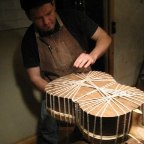
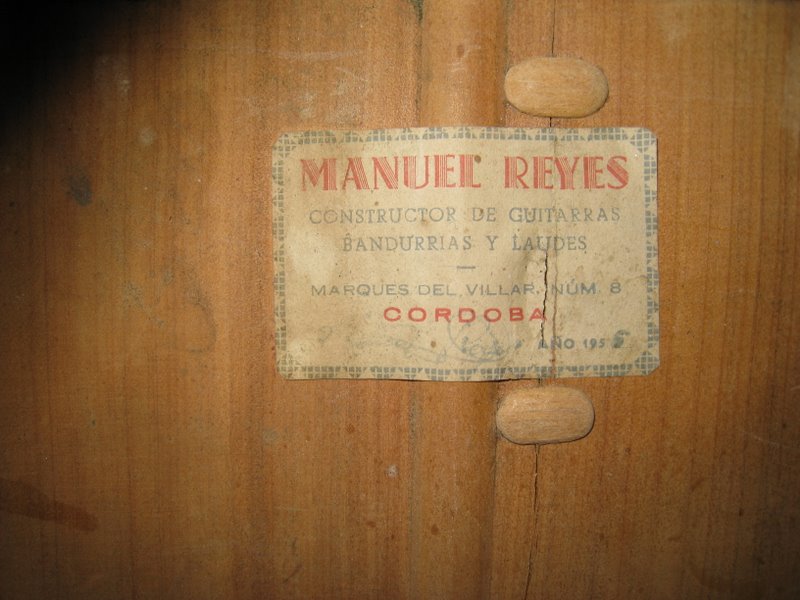
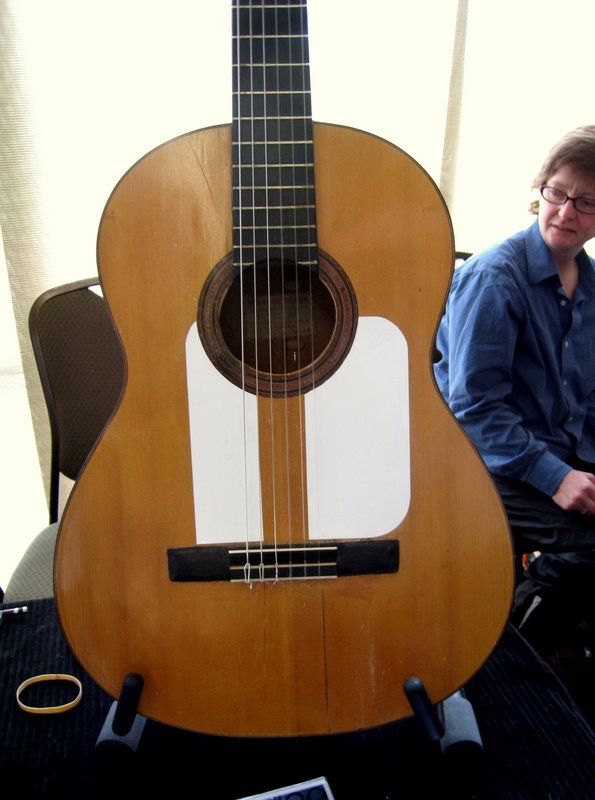
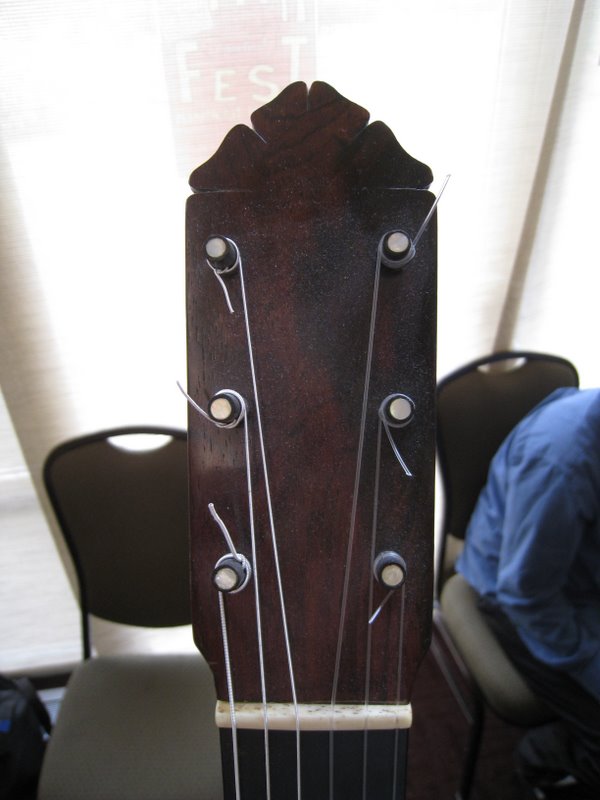

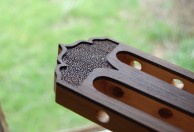



 New Messages
New Messages No New Messages
No New Messages Hot Topic w/ New Messages
Hot Topic w/ New Messages Hot Topic w/o New Messages
Hot Topic w/o New Messages Locked w/ New Messages
Locked w/ New Messages Locked w/o New Messages
Locked w/o New Messages Post New Thread
Post New Thread